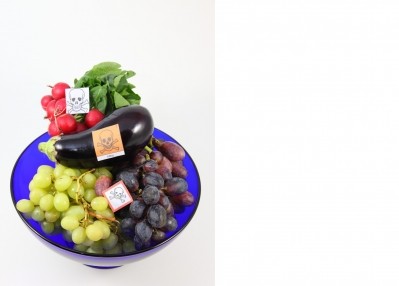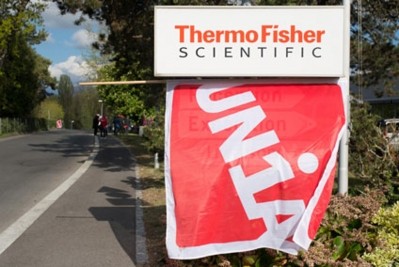First Contact: Identifying Unexpected Contaminants in Food Contact Material using LC-HRMS

The detection and identification of chemicals presents a challenge for food safety experts, whose responsibility is to ensure the chemical components of FCM do not lead to adverse effects on human health.
Chemical Contaminants
Given that food is likely to come into contact with a range of different materials throughout the processing and packaging stages of its manufacture, and that these materials come from several different sources, the potential for contamination is always high.
FCM can vary from plastics and glass to paper and metal. Each of these FCM contain unique chemical profiles that can be analyzed to check for potential contaminates caused by changes in temperature, storage duration, the food type, and the size of packaging involved.
Strict regulations, including the EU directive 10/2011 on plastic materials and the US Regulations for Packaging-Indirect Food Additives Code of Federal Regulations CRF:21, help ensure the precise standardization of protocols for FCM contaminant testing.
Plastic-based materials are the most widely used FCM due to their versatility and cost effectiveness. Nonetheless, leaching from plastics is a widely broadcasted issue, one which is frequently regarded as a potential public health hazard. There is therefore a real need for analytical tools that can accurately identify unexpected contaminants from various sources in these materials.
Testing FCM for potential chemical leaching components is a significant aspect of food quality control and assessment. With the latest advancements in high-resolution mass spectrometry and related technologies, FCM testing is more easily performed on a wider variety of chemicals and with a higher degree of confidence.
Given that FCM contain both intentionally-added substances (IAS) and non-intentionally added substances (NIAS), there are both known and unknown chemicals that have the potential to leech into food, and must therefore be identified. These chemicals may originate from impurities in the original material, degradation of the material, or reaction intermediates formed during the production process.
NIAS in plastics present an analytical challenge due to the high number of analytes and unknown chemical structures that may be present within the plastic itself. Highly-selective and highly-sensitive analytical methods must be used in order to maintain the safety of plastic FCM.
Analytical Methodologies
Advances in modern analytical instrument capabilities have led to the adoption of techniques such as liquid chromatography–high resolution mass spectrometry (LC-HRMS) for targeted and non-targeted analysis, making LC-HRMS one of the most prevalent tools for food safety chemical detection used today.
Laboratories are shifting towards using these new gas chromatography (GC)- and LC-HRMS methods that can provide higher mass resolution and higher mass accuracy, giving a greater confidence in the identification of unknown compounds. Coupling these separation techniques with high-resolution mass spectrometry facilitates high-specificity quantitation and the identification of unknown chemical species in the lab.
These advanced analytical tools achieve the precise selectivity and mass accuracy needed to make confident composition proposals, offer sound structural elucidation, and provide the ability to discriminate between different co-eluting compounds. The highly-specific identification of substances present in FCM can be accomplished with careful sample preparation and component detection using GC- or LC-HRMS, depending on the volatile or non-volatile substances examined.
The effective determination of chemical migration based on robust identification data helps to better evaluate possible exposure, and provides a valid risk assessment of the chemical to aid consideration of potential public exposure to a hazardous material.
Combined with data analysis by automated spectral deconvolution and compound identification, the GC- and LC-HRMS tools provide a powerful, rapid and comprehensive characterization of chemicals in plastic FCM, in turn ensuring that food packaging that makes it to the shelves is as safe as possible for consumers.’
Dr. Khalil Divan is the senior director of global marketing for the Food and Beverage market in the Chromatography and Mass Spectrometry group at Thermo Fisher Scientific.






















